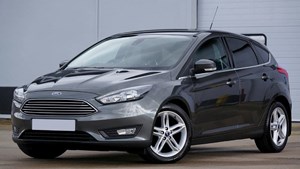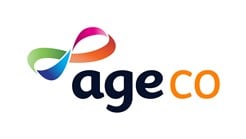How are car insurance premiums calculated?
10 minute read

If you’re looking for ways to save on car insurance, you may be wondering how the price of your policy is calculated – and whether you could make any changes to reduce the cost of your cover.
Insurers want to understand how likely you are to make a claim and therefore the level of risk undertaken to insure you. To assess this, they look at factors that fall broadly into these categories: you, your driving history, your vehicle and how you use it.
In this article, we’ll examine the factors that affect how your premium is calculated and share tips to help keep costs down.

Over 50s Car Insurance
Age Co helps drivers stay protected on the road. We’re 100% owned by Age UK and our profits go back to the charity.
You and your driving history
To understand the risks involved in covering your car, an insurer needs to understand the person driving it.
Your age and experience
With age comes experience. Drivers with decades behind the wheel – navigating roads confidently and carefully – tend to be less likely to make claims.
Costs for very young drivers and much older drivers tend to be higher, but they fall significantly for drivers between the ages of 31 and 75 .
At the same time, the stiffer joints and muscles, hearing or vision loss, and reduced reaction times that drivers over 75 may experience can represent increased risk. This means they can be more susceptible to crashes and to making claims – all of which can increase premiums.
Additionally, you’ll need to renew your UK driving licence at 70, then every three years after that if you want to stay on the roads – and insured.
Your driving and claims history
A history of making claims, whether you were at fault or not could suggest a driver might make future claims. This could make them seem more risky to insure – and result in higher costs.
Similarly, penalty points on your driving licence can also raise the cost of your insurance, as they can be indicative of reckless behaviour. You can get points on your licence for a range of offences, including:
- Exceeding the speed limit
- Using a vehicle with defective brakes
- Driving without due care and attention
- Driving or attempting to drive with alcohol level above limit
- Failing to stop after an accident
It’s also worth noting that driving without insurance is illegal. If caught, not only will you face penalty points, but it can also mean higher insurance premiums when you take out a new policy.
Finally, while it may be tempting to omit past infractions, this can invalidate your cover – and be far more costly in the long run.
Your vehicle and how you use it
You’ve shown you can be trusted on the road, but insurers also want to understand the kind of vehicle and how its cared for.
Your vehicle type
The Group Rating Panel assigns every make and model of car to an insurance group between 1 and 50, with cars in group 1 being the cheapest to insure and those in group 50 being the most expensive.
The Group Rating Panel assesses risk based on 125 data points, including:
- Price The cost when new and of settlement in the event of a total loss
- Repair costs The price and availability of parts, the specialist expertise required, and the time and money needed to repair a vehicle after a claim
- Performance The vehicle’s acceleration time, weight and top speed
- Design The safety and security features included as standard
Car insurance groups are constantly evolving. While many electric cars were placed in group 50 when first introduced, due to a lack of historical claims data, a few makes and models are now in groups 1 through 10.
Click here to learn more about car insurance groups.
Your location and where you park
Most of your driving probably takes place around your neighbourhood, so insurers will use your postcode to look up local statistics on factors that could increase your likelihood of making a claim, including:
- Crime rates such as for theft or vandalism
- Traffic and accidents
- Claims including fraudulent claims
- Population density
- Environmental and infrastructural risks such as flooding or poorly maintained roads
Some insurers will use this data to assign ratings to individual postcodes, but this is by no means standard and each insurer may have their own criteria for assessing postcode-based risk.
Additionally, parking on the street, especially a main road in a busy area, could be considered risky and increase your premium. Parking your car in a secure structure, such as a locked garage, could lower your risk – and the cost of insurance.
Your usage and mileage
Your annual mileage might seem difficult to work out, but getting an accurate figure could lower the price of your car insurance costs if you have low mileage. This is because the less you drive, the lower your exposure to risk.
You might find the exact numbers in your car’s annual service book or on its two most recent MOT certificates. If you don’t have these to hand, you can estimate it by working out a weekly average and multiplying by 52.
Your result might sound high, but the average annual mileage in the UK last year was 8,161 miles – about 157 miles each week.

Over 50s Car Insurance
Age Co helps drivers stay protected on the road. We’re 100% owned by Age UK and our profits go back to the charity.
How can you reduce your premium?
While nearly everyone wants to spend less on their car insurance, it isn’t always easy to reduce the level of risk you represent.
However, there are other things to consider if you’re interested in saving on your car insurance.
Your level of cover
The three levels of cover available in the UK are third-party; third-party, fire and theft; and comprehensive.
Third-party is the minimum level of cover you can legally have to drive on UK roads. It doesn’t cover damage to your own car or a replacement if it’s stolen, but can cover injury or damage to other people or their property.
This may sound like the cheapest option, but it may not work out that way in the event of a claim. Choosing a lower level of cover than you really need could mean you spend more on repairs than you would have spent on more expensive insurance.
Third-party, fire and theft adds cover for repairs or replacement if your car is stolen or damaged by fire, but is otherwise largely the same as third-party cover – unless customised with Optional Extras (see below).
Fully comprehensive is the highest level of cover. It covers damage to your car as well as damage to others and their vehicles, and can cover you to drive other people’s cars, depending on the policy you choose.
Third-party cover isn’t always the cheapest option – nor is fully comprehensive cover always the most expensive – so it’s worth shopping around for quotes.
Your optional extras
Some insurers may allow you to add extra cover, such as breakdown or motor legal cover, to your policy. If any are important to meet your personal cover needs, they'll be worth adding, but will increase costs.
Your excess
Opting to pay a higher voluntary excess – the amount you’d pay towards the overall cost of a claim – can reduce your premium. However, this could mean you need to find a large lump sum to put things right.
Pass Plus
Some insurers offer discounts for successful completion of the Pass Plus Scheme, which offers fully licensed drivers the opportunity to earn an additional qualification with behind-the-wheel practice in specific situations. It may be worth seeing how the cost of the course compares to what you save.
Telematics or black box insurance
This could be for you if you’re comfortable fitting your car with a small GPS device that collects data on your driving and shares it with your insurer. However, only a limited number of insurers provide this option, and these tend to be targeted at younger drivers as a way to mitigate their lack of experience.
Give as much information as possible
Being transparent with a car insurance provider can sometimes lower the cost of your car insurance. As mentioned above, disclosing your milage could reduce the price of your premium if you drive infrequently. You may also find that disclosing your driving licence number could also help bring down costs, if they can verify you have a clean driving record.
Factor insurance into your next vehicle purchase
As mentioned above, the type of vehicle you insure and its associate Group Rating can have a big impact on the cost of your car insurance premium. Therefore, if you’re considering buying a new vehicle, you may want to consider options that tend to cost less to insure – such as smaller types of cars.
Conclusion
Regardless of how you choose to save or spend on car insurance, it’s essential to do your own research and make sure you get the right cover for you. When exploring your car insurance options, keep these key points in mind:
- Drivers between 31 and 75 tend to get the most favourably priced car insurance.
- Making a claim on your insurance or getting points on your licence can result in higher car insurance costs.
- Car insurance groups will impact the price of your car insurance, as they take into account repair costs, performance, and safety design.
- Where you park your car can impact price, especially if you use on street parking in an area with high crime rates.
- Your mileage may be taken into account when getting a car insurance quote, so try to provide an accurate figure.

Sign up to the Age Co Newsletter
Each month, our email newsletter delivers inspiring stories, practical guides to later life, plus the latest news about Age Co and the charitable work we support.
